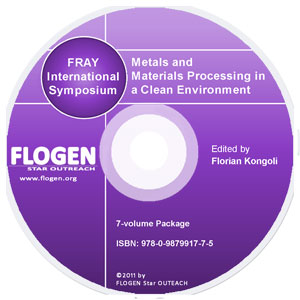
CD shopping page |
2011-Sustainable Industrial Processing Summit
|
| Editors: | Florian K |
| Publisher: | Flogen Star OUTREACH |
| Publication Year: | 2012 |
| Pages: | 708 pages |
| ISBN: | 978-0-9879917-1-3 |
| ISSN: | 2291-1227 (Metals and Materials Processing in a Clean Environment Series) |
Production Of Pellet Feed Fines From Iron Ores Beneficiation Tailings And Slimes
Antonio Peres1;1UFMG FEDERAL UNIVERSITY OF MINAS GERAIS, Belo Horizonte, Brazil;
Type of Paper: Keynote
Id Paper: 362
Topic: 5
Abstract:
The concentration of low grade iron ores is performed by gravity methods for coarser fractions, magnetic separation for the intermediate size range and froth flotation for particles smaller than 150 µm. The depletion of the higher grade deposits is a challenge for the minerals processors, for the liberation between iron oxides and quartz particles requires fine grinding forcing the increased use of flotation.The cationic reverse flotation of iron ores produces two kinds of reject products: slimes and flotation tailings. Traditionally both products are thickened and disposed into tailings ponds, resulting in significant losses of the valuable minerals. The costs of constructing and maintaining tailings damns is also high. Last but not least, the environmental impact of impounding huge amounts of material must not be disregarded.The use of wet high intensity magnetic separation and reverse cationic flotation, individually or combined, for the production of pellet feed fines from the desliming hydrocyclones overflow and the flotation tailings is addressed. Results from laboratory and pilot plant scale experiments are presented, showing the feasibility of successfully concentrating both reject products.